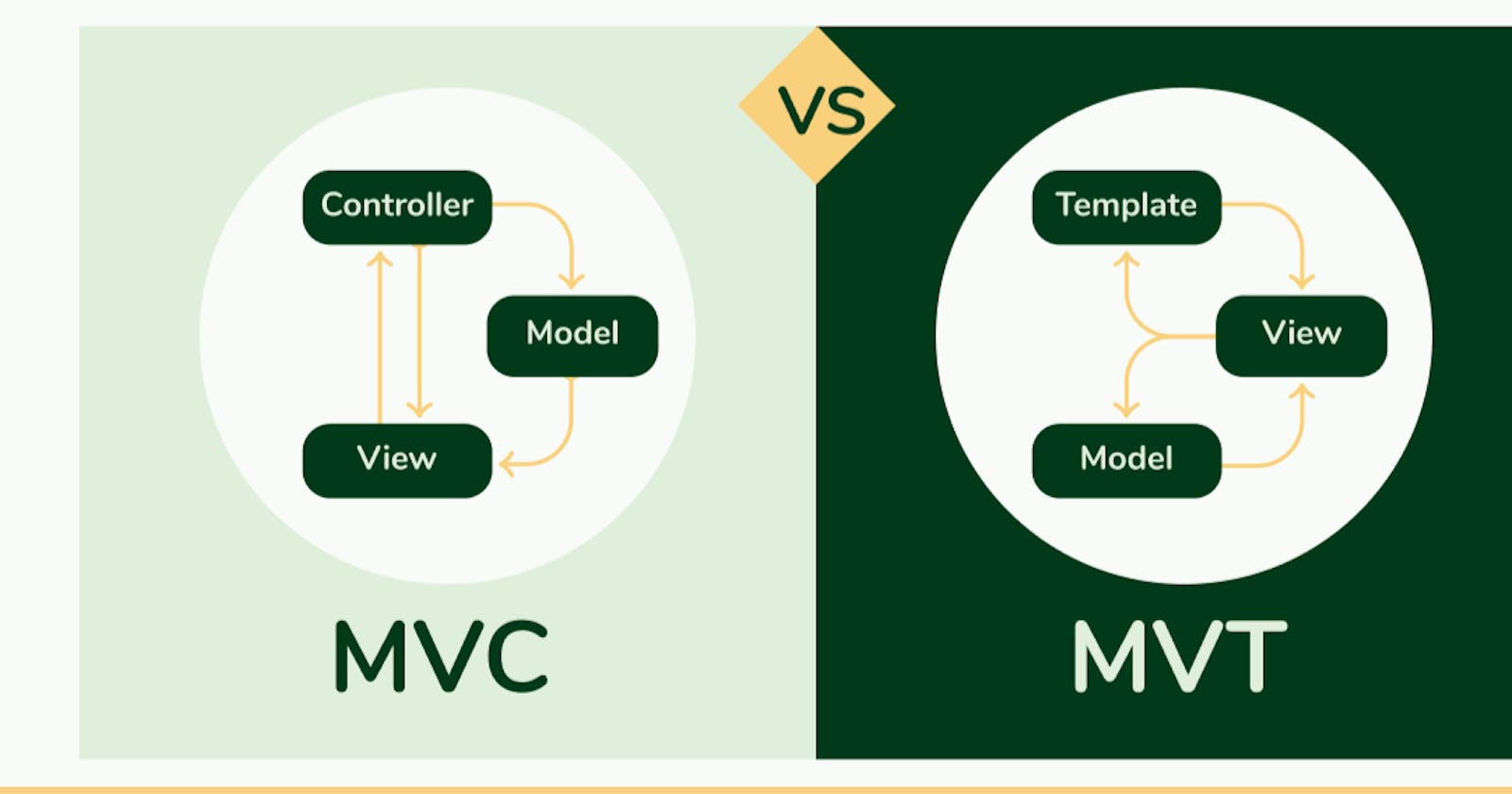The terms "MVC" and "MVT" both refer to architectural patterns used in software development.
MVC (Model-View-Controller) is a widely used architectural pattern in which an application is divided into three interconnected components: the model, which represents the data and business logic; the view, which displays the data to the user; and the controller, which handles user input and updates the model and view accordingly. The main advantage of MVC is that it promotes separation of concerns, making it easier to maintain and modify the different components independently.
MVT (Model-View-Template) is a similar architectural pattern used in web development with the Django web framework. In MVT, the model, view, and template components correspond to the model, controller, and view components in MVC, respectively. The main difference is that in MVT, the template is responsible for rendering the view, whereas in MVC, the view handles rendering. MVT also promotes separation of concerns and helps keep presentation logic separate from business logic.
Overall, both MVC and MVT are useful architectural patterns that can help make software development more organized and maintainable. The choice of which pattern to use depends on the specific needs of the project and the development framework being used.
Thanks For Reading
